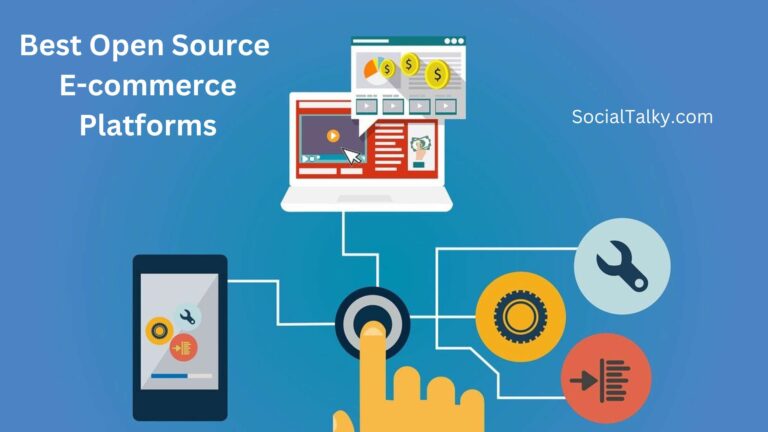Five Steps in an Effective Influencer Marketing Strategy
In recent years the field of influencer marketing has truly become a thing of the past. The industry has more than doubled in market value, and in 2021 has reached a value of $13.8 billion. If the market’s value is rising so rapidly this strategy is successful for the companies that invest in it.
However, if you’ve previously not attempted influencer marketing, it’s possible that you’re not certain where to begin. This is why we’ve put together a quick guide to help you understand how to manage the five phases of an influencer marketing campaign.
Campaign Definition: Understand your goal and target audience
The first step to decide is your goal. Do you wish to work with influencers in order to increase awareness of your company? Maybe you’re trying to gain new customers and increase your sales. Whatever the reason, ensure your objective is crystal clear.
Establish some KPIs (key performance indicators) to track your progress towards achieving the desired goal. For instance, for a sales campaign you may want to record how many people use discounts for influencers in addition to the amount of revenue and sales.
Alongside this you should also define your target audience. Be sure to know who you are trying to target through your campaign. Consider their gender, age, languages, location, and other interests.
Then, discover on which social media platform your customers spend most of their time. Demographics can assist you in deciding this. For instance, if you are looking to connect with teens then you must look into TikTok influencers, as that network has a lot of users who are young people.
Campaign Setup: Find influencers that can work with your budget
There are many aspects that influence how much an influencer charges, such as their location, their engagement rate, and the kind of content you’d like them to create. Another important factor is the number of followers.
To better understand this, let’s divide influencers into different levels:
- Nano influencers, 1-5K followers
- Micro influencers, 5-50K followers
- Medium influencers, 50-100K followers
- Macro influencers, 100K-1M followers
- Mega influencers, 1M+ followers
- Key opinion leaders, no set follower range
The higher that you climb in these levels, the more expensive influencers are to contract. Micro and nano influencers often agree to work with you in exchange for complimentary products, or at times a minimal amount of $100 – $200. They’re thus a good option for those on a budget. However, starting at the medium range and up, you’ll need a bigger budget to pay more expensive influencer fees.
A KOL, or key opinion leader, is a person who has an excellent reputation within the field they work in. Since they have other platforms where they can voice their opinions other than social media, they don’t have a defined number of followers. KOLs can be costly and can be difficult to connect with, so ensure you consider what kind of return on investment they will offer you.
When you’re looking for any type of influencer, make sure you examine their profiles to identify any indications of influencer fraud. Whether it’s a mega or nano influencer, take a look at their follower growth, engagement rates and the authenticity of their audience to ensure that their followers look to be real.
Campaign Launch: Negotiate and consider a contract
Generally speaking, it’s best to contact twice the amount of influencer you believe you’ll require, because some influencers may not reply or even read your emails.
Engage with influencers who would like to collaborate with you. Talk about topics such as:
- How much you’ll pay them (consider both free products and fees)
- What amount of content, and what kind, they’ll create
- Posting deadlines
- Disclosure requirements that content has to meet
- Hashtags or other mentions you’d like to make use of
Also, consider whether you require a contract. If you’re merely providing influencers with free products, you typically do not need a contract, except if the product is very expensive. However, if you’re charging fees, you’ll likely want to put the contract in writing.
If you need a contract but you’re uncertain of where to begin, you could get an influencer contract template. Change these variables for the details that are specific to your particular campaign. You can then discuss any concerns you might have with your legal professional.
Campaign Monitoring: Don’t miss out on results
When your campaign is up and running, ensure that you have a system that can record the results. It is important to monitor the content that influencers share and also track data such as how many comments, likes, and views their content receives.
To accomplish this, you can monitor your brand’s mentions and hashtags associated with your brand. If you’ve asked influencers to use them in their posts, you should get notifications of when they do that. Alternatively, you can check in manually to find out when they’ve posted, although this is only recommended if working with a few influencers.
As for metrics, you might need to use a few tools, depending on what you want to monitor. Google Analytics can capture data regarding your site, such as visits, the links that brought visitors in, and so on. E-commerce platforms such as Shopify can give you information on sales and revenue. You may also have to ask influencers about private data about their social media accounts such as the amount of impressions their posts generated.
Campaign Analysis: Remember that success is relative
It’s tempting to evaluate yourself against your rivals, or to successful campaigns you have heard about. But don’t!
Success is relative, which means you shouldn’t compare yourself to anyone else. You should only compare your results to your own investment and expectations.
If, for instance, you paid a micro-influencer $100 to help promote your brand’s latest sneakers, and provided them with the sneakers at $50, the investment would be $150 in total. If the influencer is able to generate $250 in sales then you’ll know that you’ve made money and therefore have succeeded.
Another way to gauge your performance is to compare it against your initial goals. Imagine that you hire an influencer, and you pay them $200, hoping they will get 50K views of their content. In the end, they’ll bring in 75K. You’ve exceeded your initial expectations, lowered the cost per impression, and are therefore successful.
Conclusion
Influencer marketing isn’t always simple, so keep an open mind during the process. It’s possible that you’ll need to make last-minute adjustments, and the results may not be amazing, at least the first time around. If you don’t succeed how you wanted to, examine the reasons why and search for possible avenues to success that you may not have anticipated. That way, you’ll be better prepared for the next time.


